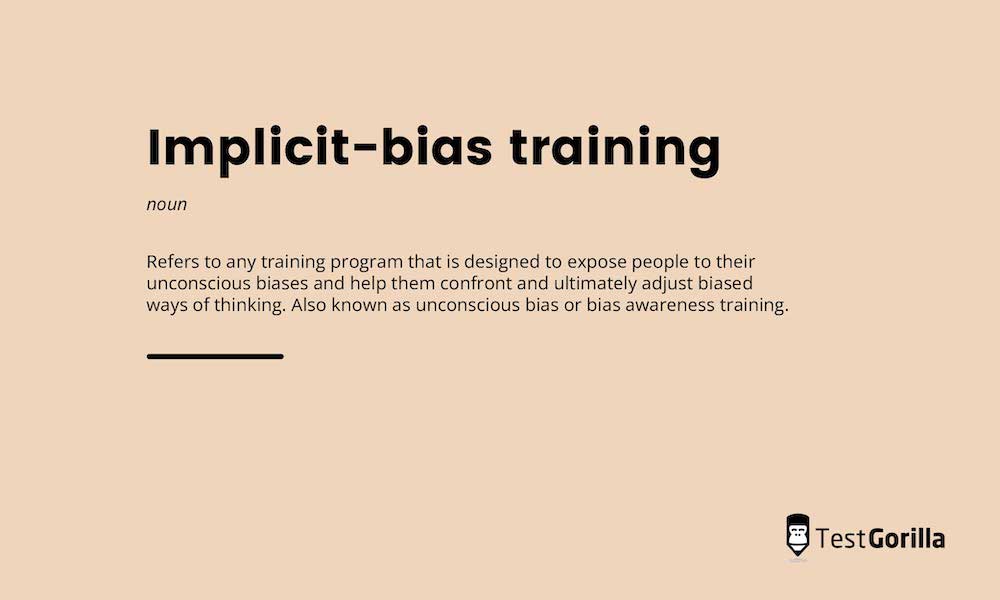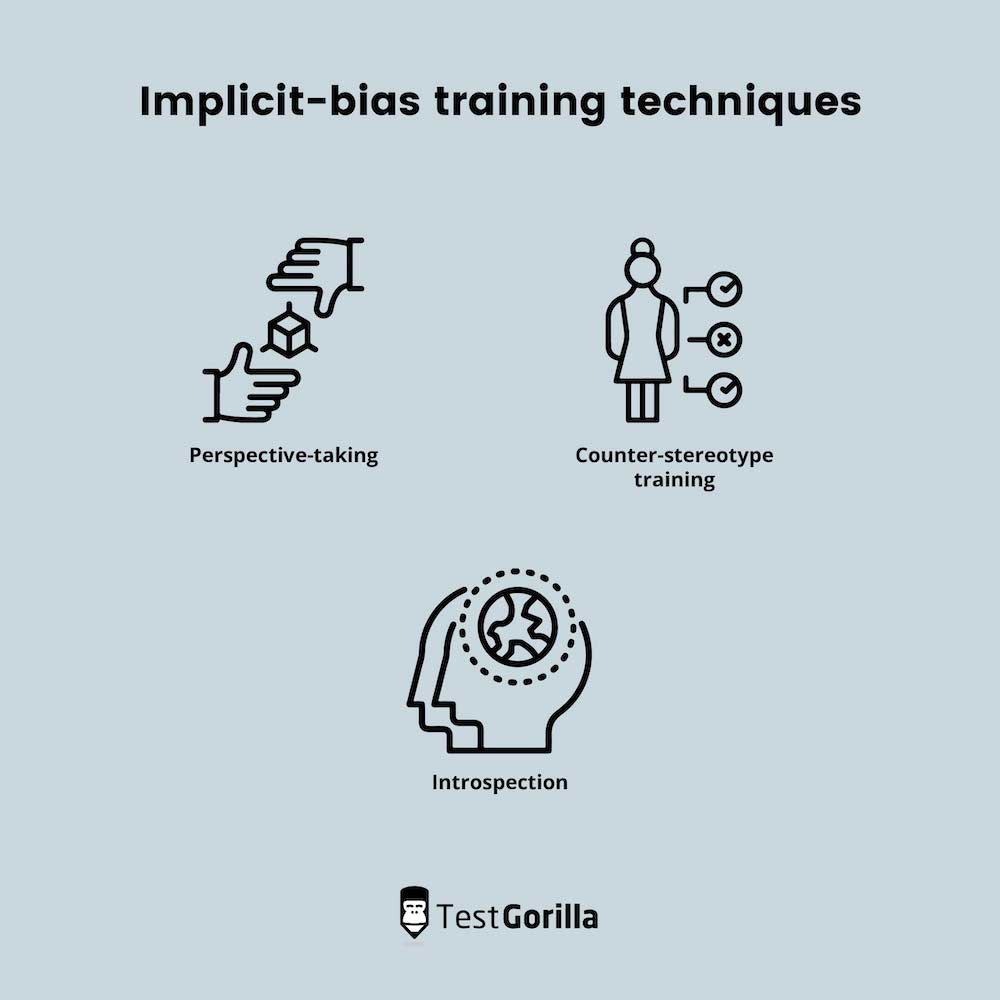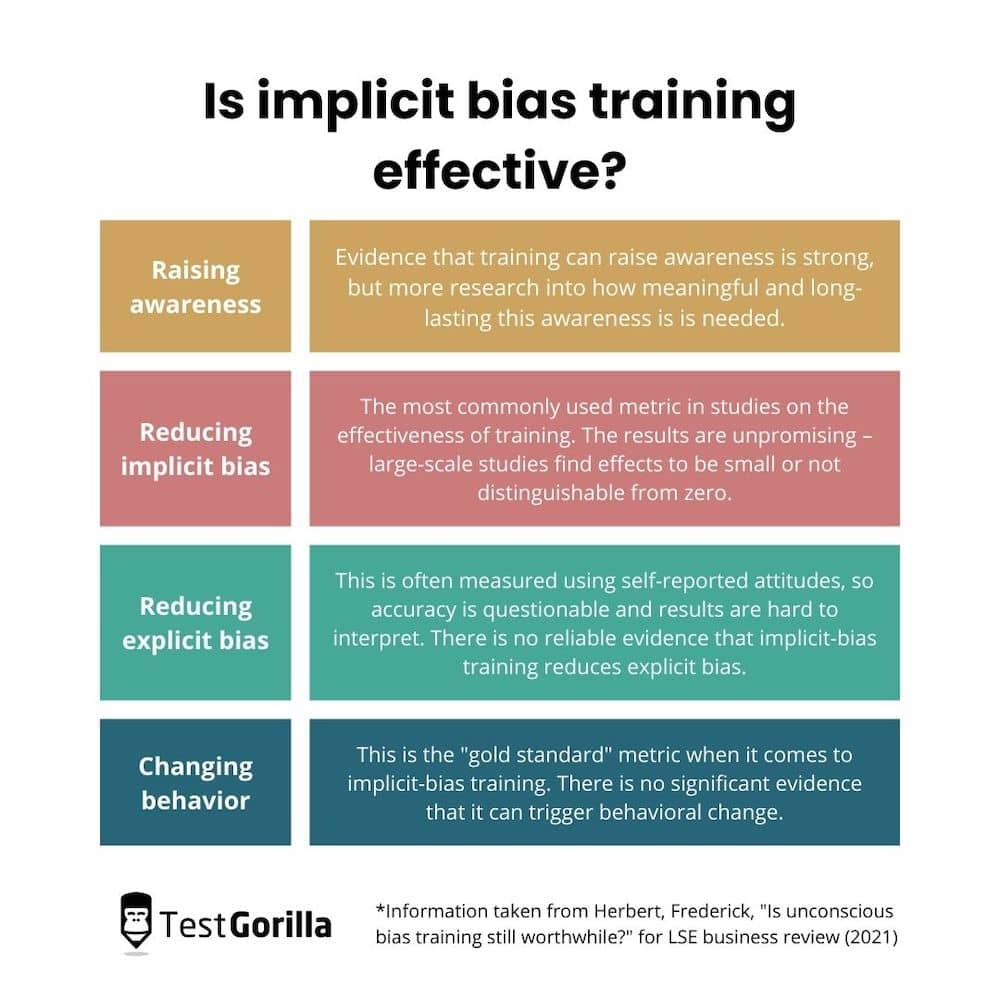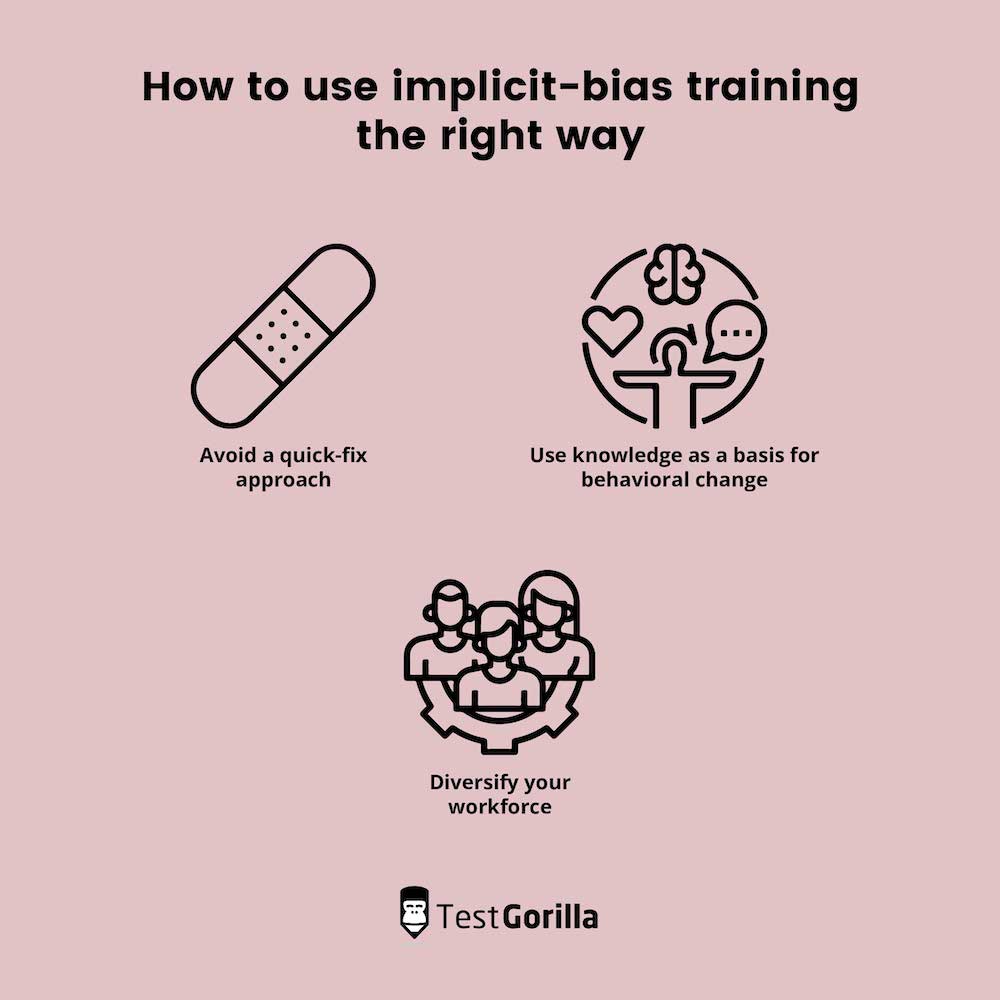Does implicit-bias training work? Probably not, but here’s what you can do about it
The human brain is a complex and intelligent organ, but it does take shortcuts.
This isn’t always out of laziness or negligence; sometimes, decisions need to be made as quickly as possible to ensure survival, or to make tight deadlines. Processing and evaluating information takes up mental energy that we’re often unable, or too lazy, to spare. If there’s a pre-existing assumption in your unconscious mind that might help you reach a decision quickly, there’s a high chance you’ll yield to it and make a biased call.
The term implicit bias, also known as unconscious bias, was coined in 1995 by the social psychologists Mahzarin Banaji and Tony Greenwald in a paper that proposed that human social behavior is largely influenced by unconscious associations and assumptions. Defined as any unfair and unconscious belief about groups of people that affects our behavior and decisions, implicit bias creeps in, without us noticing when our brains take these shortcuts.[1]
Implicit biases are forged by a mixed influence of cultural context and personal experience, and unfortunately, since we’re exposed to unfair stereotypes all the time, we all have them. It’s not that we’re all awful people; we’re like animals adjusting and responding to an environment.
Unfortunately, our social and cultural environment is hostile and prejudiced towards certain groups of people. So, intentions aside, we make bad or unfair judgments all the time.
Implicit-bias training is supposed to prevent this. It took off after the Implicit-Association Test (IAT) was first designed and implemented in 1998, providing people with a way to assess their unconscious biases. Since then, implicit-bias training has been implemented by organizations and institutions, namely employers, all over the world.[2]
The question is, does implicit-bias training work? Unfortunately, evidence shows that it doesn’t. We’ll take you through the details in this blog post.[3]
Let’s start by answering some of the burning questions about the activity.
Frequently asked questions
How common is implicit bias?
As implied by the name, most people aren’t aware of their implicit biases. However, they are more likely to become apparent in environments where decisions that affect other people are made on a consistent basis, for example, during a hiring process or a law enforcement situation where threats need to be assessed quickly.
Because these scenarios are everpresent, implicit biases can have a pervasive impact on our lives. A recent study into the perception of implicit biases in the UK revealed that 52% of people believe bias is a general phenomenon that is present in most contexts.
What is implicit-bias training?
Implicit-bias training, also known as unconscious-bias or bias-awareness training, refers to any training program that is designed to expose people to their unconscious biases and help them confront and ultimately adjust biased ways of thinking.
It can take many forms: a program delivered in person internally, training delivered by an external educator or agency, an online course complete with video lectures and a certificate upon completion, or simply a bit of required reading.
Whatever the format, the idea behind it is the same: Raising awareness about the biases we hold but are unaware of equips us with the tools to mitigate their effects. Typical approaches to combating the effects of unconscious bias target its unconscious nature. This goal of consciousness-raising comes with the understanding that a shift in awareness will be enough to reduce the influence our biases have on our actions and decision-making.
How is implicit-bias training used?
Companies tend to follow a three-step approach to implicit-bias training:
Participants discuss or test (perhaps using the IAT) their implicit biases to better understand baseline levels of unconscious bias.
Participants complete the implicit-bias training program that is in place.
Participants discuss or test their implicit biases again to re-evaluate their bias levels.
For step two, the following techniques, or a combination of them, are popularly used in implicit-bias training programs.
Perspective-taking:
Encouraging people to take on the perspective of someone who experiences discrimination is one way to help them to be more thoughtful about the groups they hold biases about. This is also known as perspective-taking.
Perspective-taking is an exercise in building empathy. To generate empathy for groups of people that are negatively stereotyped, participants in this kind of program are usually exposed to the chosen group in photos or videos, often ones displaying a situation where a person from this group is being discriminated against. They are then asked to reflect on this person and their lived experience.
Counter-stereotype training, or stereotype replacement:
Counter-stereotype training, or stereotype replacement, involves providing program participants with images and examples opposing negative stereotypes that drive implicit bias. Hearing and writing about the stories of powerful women, for example, has been shown to reduce levels of implicit gender bias on the IAT.
Bias decreases when the idea that women are hard-working and intelligent, and just as capable as men, is reinforced. This strategy demonstrates exactly why representation is so important. To stick with the example of gender, if we’re taught by female professors, or have more colleagues at work who are female counter-stereotypes, stereotype replacement can happen by proxy.
Introspection:
Because unconscious biases are, well, unconscious, we are often in denial of their existence. Introspection is the observation and examination of one’s own thoughts, values, and feelings. Implicit-bias training programs that involve introspection ask participants to self-reflect in order to identify, understand, and be honest about their biases.
Every kind of implicit-bias training must involve some degree of introspection, but programs will differ in how they encourage it. Participants might be split into smaller discussion groups or asked to reflect on their biases via an anonymous submission tool.
So far, so good. Fostering empathy, disproving stereotypes, and encouraging reflection all make sense as ways to start conversations about bias, prejudice, and discrimination. So why is there mounting evidence suggesting implicit-bias training doesn’t work?
Does implicit bias training work? 4 factors to consider
There are four key results to target when it comes to any kind of diversity, equity, and inclusion (DE&I) initiative. These are:
Raising awareness
Reducing implicit bias
Reducing explicit bias
Changing behavior
In a naive understanding of things, one will lead to the other, with implicit-bias training setting off a kind of chain reaction that will lead individuals to behave in the interests of diversity, equity, and inclusion. But this is just not the case.
Although evidence shows that implicit-bias training can successfully raise awareness, it’s unclear how long the effects of this last if the training isn’t followed up, which it usually isn’t. There’s also no strong or conclusive proof that a typical implicit-bias training session can effectively reduce unconscious bias.
When it comes to explicit bias and behavior, there’s evidence that training can actually worsen things – it might activate negative stereotypes, or make people feel complacent about their biases because they’ve done their bit by showing up (this is called moral licensing).
People can experience resentment, too, and feel as though their thoughts and behavior are being controlled, or as if they’re being asked to tread on eggshells around certain people. This results in backlash, where bias increases and behavior changes for the worse.
The best insights on HR and recruitment, delivered to your inbox.
Biweekly updates. No spam. Unsubscribe any time.
Three reasons why implicit-bias training doesn’t work
1. It’s difficult to overcome implicit bias
One reason is that our expectations of implicit-bias training are incredibly high. Overcoming implicit bias is a hard thing to do – you have to pay attention, dig deep, and check yourself frequently.
More than anything else, you have to acknowledge your biases and want to overcome them: Even the best implicit-bias training program in the world would flop if all its participants believed they were pure and unbiased angels, or if they accepted their biases but weren’t interested in controlling them.
2. Training is used as a one-off intervention
This being said, training is also being implemented badly. All too often, companies and organizations will host a single training session, tick the relevant box under DE&I, and continue with business as usual.
Any kind of learning is ineffective if it isn’t reinforced and followed up meaningfully, and the same goes for implicit-bias training. DE&I deserves commitment, thought, time, and resources; bias, prejudice, and discrimination in the workplace are big social-justice issues, and confronting them in an afternoon with a single PowerPoint presentation is like sticking a Band-Aid on a broken arm.
3. Workplaces aren’t diverse enough
Empathy is crucial to reducing bias, and it’s hard to empathize with groups of people that we never spend time with. Having a workplace that lacks diversity severely reduces the chances of successful implicit-bias training because it becomes harder to develop a sense of empathy that breaks bias.
Think back to the counter-stereotyping strategy – encountering and working with people who contradict your implicit biases every day will help erode any biases you might hold towards them.
This point highlights unbiased recruitment strategies as a priority for DE&I. Workplaces lack diversity due to the barriers to employment people face because of backgrounds and identities, a problem that is exacerbated by our enduring attachment to CV-based hiring.
Three ways to make implicit-bias training work for you
US companies spend an estimated $8bn a year on implicit-bias training. It’s definitely a “more money than sense” kind of scenario – companies are continuing to spend vast amounts of cash on something that isn’t bringing results.
But implicit-bias training isn’t irredeemable. The key positive takeaway from this discussion is that implicit-bias training can reliably raise awareness or increase knowledge. Let’s take a look at how we can nurture this particular win, so we can make the most of the one thing implicit-bias training consistently does well.
Avoid a quick-fix approach
First and foremost, there’s no quick fix for DE&I. Remember that our unconscious biases are reinforced every day by stereotype-laden media. To counteract this, approaches to implicit-bias training need to be consistent and drawn out over time. Frequent introspection, communication, and feedback are in order. Make DE&I part of your business as usual.
Use knowledge as a basis for behavioral change
Implicit-bias training can reliably shift knowledge and increase awareness. Though this feels like a meager return for that $8bn, awareness-raising is necessary, although not sufficient, for behavioral change.
The COM-B model of behavior, which identifies what’s needed in an intervention for it to effectively change behavior, presents the three factors that must be present for any behavior to occur: Capability, opportunity, and motivation. In this model, having the relevant skills and/or knowledge comes under the definition of “capability.” In other words, if you don’t have knowledge of your implicit biases, then you aren’t capable of changing your behavior to mitigate them.
By developing thoughtful, long-term approaches to DE&I, with implicit-bias training implemented at the start and followed up consistently, companies and organizations can use its awareness-raising potential as a basis for behavioral change.
Diversify your workforce
This one is crucial, and the only way to make it happen is by removing bias from your recruitment processes. Luckily, we can provide you with a reliable and specific way to do that.
Traditional hiring practices revolve around the CV, a document that lists the personal details, education, and experience of candidates. Because of this, CVs invite bias, explicit and implicit, into your hiring decision-making process.
Not only this, but after opening the door and welcoming them in, CVs give bias a seat at the head of the table. The way you recruit has the power to make or break your approach to DE&I in the workplace, implicit-bias training or otherwise.
Our suggestion is that you make your hiring strategy part of your DE&I approach. If you make unbiased hiring a priority, you’ll be able to diversify your workforce and build an equitable, inclusive environment, where employees are surrounded by people who are different from them.
With pre-employment assessment platforms, you can move from CV-based to skills-based hiring. Make recruitment decisions based on data that tells you exactly which skills your candidates have, and how capable they are of doing the job you need them to do.
Sources
Greenwald, A. G., & Banaji, M. R. (1995). Implicit social cognition: Attitudes, self-esteem, and stereotypes. Psychological Review, 102 (1), 4–27. https://doi.org/10.1037/0033-295x.102.1.4
Projectimplicit. Take a Test. (n.d.). https://app-prod-03.implicit.harvard.edu/implicit/takeatest.html
Forscher, P. S., Lai, C. K., Axt, J. R., Ebersole, C. R., Herman, M., Devine, P. G., & Nosek, B. A. (2019). A meta-analysis of procedures to change implicit measures. Journal of Personality and Social Psychology, 117 (3), 522–559. https://doi.org/10.1037/pspa0000160
Related posts
You've scrolled this far
Why not try TestGorilla for free, and see what happens when you put skills first.


















